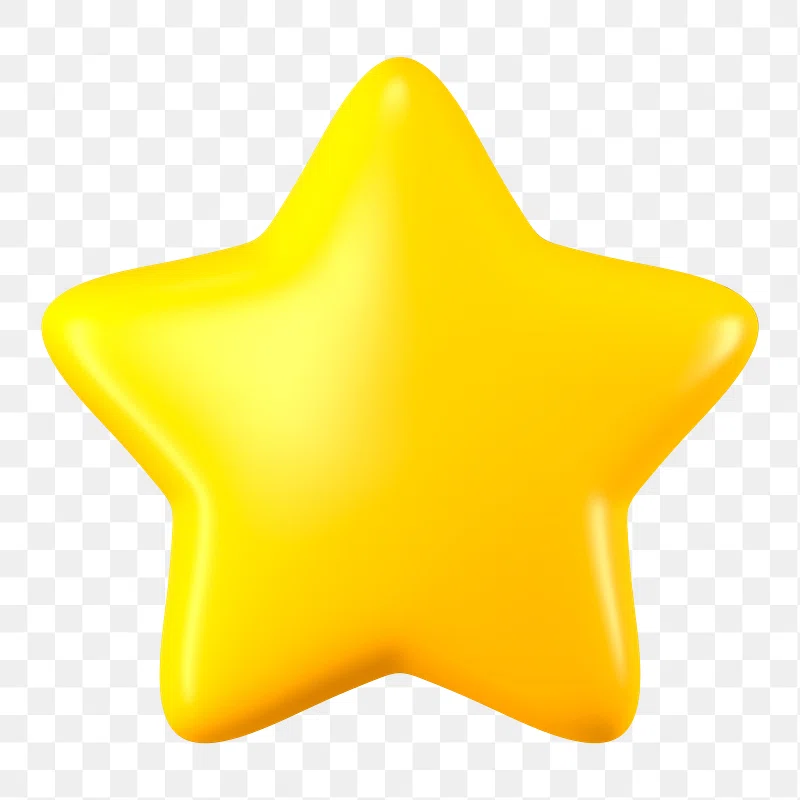KIRA is a virtualization and consensus framework that enables anyone to deploy code that can be trusted without the need for smart contracts, application specific side-chains or operating any complex infrastructure.
Building decentralized applications doesn't have to be difficult and the settlement of Layer 2 application state doesn't have to require any complex cryptographic operations.
With KIRA we can start onboarding deterministic Web2 systems to power the new evolution of compossible Web3 far beyond what was ever possible before.
At the heart of KIRA lies SEKAI, a core blockchain application responsible for on-chain logic and cross-application communication. SEKAI ensures that different applications within the KIRA ecosystem can interact seamlessly, fostering a more integrated and efficient decentralized environment. Additionally, KIRA provides a testnet for developers and node operators, enabling them to participate in and contribute to the ecosystem's growth and stability.
KIRA's virtualization and consensus framework enable the deployment of trusted code without the need for application-specific side-chains or complex infrastructure. This approach simplifies the development of decentralized applications, making it easier to onboard deterministic Web2 systems into the evolving Web3 landscape. By eliminating the need for intricate cryptographic operations, KIRA paves the way for a more accessible and scalable decentralized ecosystem.
KIRA's hypermodular design means it can support a wide range of decentralized applications (dApps) without the need for traditional blockchain infrastructure. This flexibility is crucial for developers who want to build complex applications without dealing with the intricacies of smart contracts or application-specific side-chains. The network's decentralized infrastructure ensures shared security and aligned incentives for validators, builders, and users, creating a balanced ecosystem where all participants benefit.
One of the standout features of KIRA is its ability to offer liquid staking for virtual currencies, digital fiat, and non-fungible tokens (NFTs) in a cross-chain ecosystem. This means users can stake their assets and still maintain liquidity, allowing them to participate in various financial activities without locking up their funds. This is particularly beneficial for decentralized finance (DeFi) applications, where liquidity is often a critical factor.
KIRA also provides solutions for tokenomics and decentralized finance, enabling users to borrow cryptocurrencies using their digital assets as collateral at low-interest rates. This feature opens up new financial opportunities for users, allowing them to leverage their existing assets to access additional funds. The network's customizable consensus framework and finality rules further enhance its adaptability, making it suitable for a wide range of applications.
The Virtual Finality Gadget (VFG) is a key component of KIRA's technology, ensuring that the execution of transactions is separate from their verification. This separation reduces the risk of attacks from bad actors, as the verification process is handled independently from the execution. This approach not only enhances security but also improves the overall efficiency of the network.
KIRA's virtualization and consensus framework enable anyone to deploy code that can be trusted without the need for smart contracts or complex infrastructure. This makes it easier for developers to build and deploy decentralized applications, reducing the barriers to entry and fostering innovation. The network's ability to onboard deterministic Web2 systems to power the new evolution of composable Web3 applications further extends its capabilities, making it a versatile platform for a wide range of use cases.
In addition to its technical features, KIRA offers a decentralized infrastructure that ensures shared security and aligned incentives for all participants. Validators, builders, and users all benefit from the network's design, creating a balanced ecosystem where everyone has a stake in the network's success. This alignment of incentives is crucial for maintaining the network's integrity and ensuring its long-term viability.
KIRA's Layer 1 network enables market access to any digital asset in the cryptocurrency ecosystem, providing a seamless experience for users who want to interact with various digital assets. This broad access is essential for creating a truly decentralized and inclusive financial system, where users can freely trade and interact with a wide range of assets without restrictions.
The technology behind KIRA is designed to make building decentralized applications easier and more efficient. By eliminating the need for complex cryptographic operations and traditional blockchain infrastructure, KIRA simplifies the development process and opens up new possibilities for innovation. This approach not only reduces the barriers to entry for developers but also enhances the overall user experience, making decentralized applications more accessible to a broader audience.
One of the standout features of KIRA is its Virtual Finality Gadget, which provides advanced capabilities for AI and gaming applications. This tool ensures that transactions and operations within these applications are finalized quickly and securely, enhancing user experience and reliability. Additionally, KIRA offers customizable hardware resources, allowing developers to tailor the infrastructure to meet the specific needs of their applications.
KIRA also plays a significant role in decentralized finance (DeFi). It serves as a financial hub for dApps, enabling trustless staking and borrowing of cryptocurrencies. This means users can stake their assets without relying on a central authority, and they can borrow cryptocurrencies in a decentralized manner, driving capital to new projects and fostering innovation within the ecosystem.
The core blockchain application of KIRA, known as SEKAI, orchestrates the infrastructure and provides shared security for all applications on the network. This shared security model ensures that all applications benefit from a robust and secure environment, reducing the risk of attacks and vulnerabilities.
Furthermore, KIRA's infrastructure is designed to support the onboarding of deterministic Web2 systems, facilitating the transition to Web3. This capability allows traditional web applications to evolve and integrate with decentralized technologies, expanding the possibilities for developers and users alike.
In summary, KIRA offers a versatile and powerful platform for building decentralized applications, supporting AI and gaming, enabling DeFi activities, and providing a secure and customizable infrastructure for a wide range of applications.
One of the pivotal moments for KIRA was the release of their documentation v2. This update provided comprehensive guidelines and technical details, enhancing the understanding and usability of the KIRA ecosystem for developers and users alike. The improved documentation played a crucial role in fostering a more informed and engaged community.
Another significant event was the distribution of KEX and USD to active chaosnet node operators and evangelists. This initiative rewarded those who contributed to the network's stability and growth, incentivizing further participation and support. By distributing tokens to active participants, KIRA ensured a more decentralized and robust network.
The launch of their core blockchain application, SEKAI, marked a major milestone. SEKAI serves as the foundational layer of the KIRA network, enabling the secure and efficient operation of decentralized applications. This launch was a critical step in realizing KIRA's vision of a more accessible and scalable blockchain infrastructure.
KIRA's focus on onboarding deterministic Web2 systems to power the evolution of Web3 has also been a noteworthy development. This approach aims to bridge the gap between traditional web systems and the decentralized web, expanding the potential use cases and adoption of blockchain technology.
These key events highlight KIRA's commitment to innovation and community engagement, positioning it as a significant player in the blockchain and cryptocurrency landscape.
Building decentralized applications doesn't have to be difficult and the settlement of Layer 2 application state doesn't have to require any complex cryptographic operations.
With KIRA we can start onboarding deterministic Web2 systems to power the new evolution of compossible Web3 far beyond what was ever possible before.
What is KIRA?
KIRA (KEX) stands out as a hypermodular network designed to support the execution of trustless, blockchain-less applications operating as Layer 2 (L2) systems. Unlike traditional blockchain frameworks, KIRA offers a programmable consensus framework, allowing each application's execution validity to be verified through customizable finality rules. This flexibility is crucial for developers seeking to create decentralized applications without the need for complex cryptographic operations or smart contracts.At the heart of KIRA lies SEKAI, a core blockchain application responsible for on-chain logic and cross-application communication. SEKAI ensures that different applications within the KIRA ecosystem can interact seamlessly, fostering a more integrated and efficient decentralized environment. Additionally, KIRA provides a testnet for developers and node operators, enabling them to participate in and contribute to the ecosystem's growth and stability.
KIRA's virtualization and consensus framework enable the deployment of trusted code without the need for application-specific side-chains or complex infrastructure. This approach simplifies the development of decentralized applications, making it easier to onboard deterministic Web2 systems into the evolving Web3 landscape. By eliminating the need for intricate cryptographic operations, KIRA paves the way for a more accessible and scalable decentralized ecosystem.
What is the technology behind KIRA?
The technology behind KIRA (KEX) is a hypermodular network that supports the execution of trustless, blockchain-less applications operating as Layer 2 (L2) systems. This unique approach allows for a programmable consensus framework, utilizing a Virtual Finality Gadget (VFG) to separate execution from verification. This separation enhances the efficiency and security of the network, making it robust against various types of attacks.KIRA's hypermodular design means it can support a wide range of decentralized applications (dApps) without the need for traditional blockchain infrastructure. This flexibility is crucial for developers who want to build complex applications without dealing with the intricacies of smart contracts or application-specific side-chains. The network's decentralized infrastructure ensures shared security and aligned incentives for validators, builders, and users, creating a balanced ecosystem where all participants benefit.
One of the standout features of KIRA is its ability to offer liquid staking for virtual currencies, digital fiat, and non-fungible tokens (NFTs) in a cross-chain ecosystem. This means users can stake their assets and still maintain liquidity, allowing them to participate in various financial activities without locking up their funds. This is particularly beneficial for decentralized finance (DeFi) applications, where liquidity is often a critical factor.
KIRA also provides solutions for tokenomics and decentralized finance, enabling users to borrow cryptocurrencies using their digital assets as collateral at low-interest rates. This feature opens up new financial opportunities for users, allowing them to leverage their existing assets to access additional funds. The network's customizable consensus framework and finality rules further enhance its adaptability, making it suitable for a wide range of applications.
The Virtual Finality Gadget (VFG) is a key component of KIRA's technology, ensuring that the execution of transactions is separate from their verification. This separation reduces the risk of attacks from bad actors, as the verification process is handled independently from the execution. This approach not only enhances security but also improves the overall efficiency of the network.
KIRA's virtualization and consensus framework enable anyone to deploy code that can be trusted without the need for smart contracts or complex infrastructure. This makes it easier for developers to build and deploy decentralized applications, reducing the barriers to entry and fostering innovation. The network's ability to onboard deterministic Web2 systems to power the new evolution of composable Web3 applications further extends its capabilities, making it a versatile platform for a wide range of use cases.
In addition to its technical features, KIRA offers a decentralized infrastructure that ensures shared security and aligned incentives for all participants. Validators, builders, and users all benefit from the network's design, creating a balanced ecosystem where everyone has a stake in the network's success. This alignment of incentives is crucial for maintaining the network's integrity and ensuring its long-term viability.
KIRA's Layer 1 network enables market access to any digital asset in the cryptocurrency ecosystem, providing a seamless experience for users who want to interact with various digital assets. This broad access is essential for creating a truly decentralized and inclusive financial system, where users can freely trade and interact with a wide range of assets without restrictions.
The technology behind KIRA is designed to make building decentralized applications easier and more efficient. By eliminating the need for complex cryptographic operations and traditional blockchain infrastructure, KIRA simplifies the development process and opens up new possibilities for innovation. This approach not only reduces the barriers to entry for developers but also enhances the overall user experience, making decentralized applications more accessible to a broader audience.
What are the real-world applications of KIRA?
KIRA (KEX) stands out as a virtualization and consensus framework designed to simplify the deployment of trusted code without the need for smart contracts or complex infrastructure. This makes it particularly useful for building and testing decentralized applications (dApps). Leveraging KIRA's hypermodular framework, developers can create resource-intensive applications such as artificial intelligence (AI) and gaming platforms.One of the standout features of KIRA is its Virtual Finality Gadget, which provides advanced capabilities for AI and gaming applications. This tool ensures that transactions and operations within these applications are finalized quickly and securely, enhancing user experience and reliability. Additionally, KIRA offers customizable hardware resources, allowing developers to tailor the infrastructure to meet the specific needs of their applications.
KIRA also plays a significant role in decentralized finance (DeFi). It serves as a financial hub for dApps, enabling trustless staking and borrowing of cryptocurrencies. This means users can stake their assets without relying on a central authority, and they can borrow cryptocurrencies in a decentralized manner, driving capital to new projects and fostering innovation within the ecosystem.
The core blockchain application of KIRA, known as SEKAI, orchestrates the infrastructure and provides shared security for all applications on the network. This shared security model ensures that all applications benefit from a robust and secure environment, reducing the risk of attacks and vulnerabilities.
Furthermore, KIRA's infrastructure is designed to support the onboarding of deterministic Web2 systems, facilitating the transition to Web3. This capability allows traditional web applications to evolve and integrate with decentralized technologies, expanding the possibilities for developers and users alike.
In summary, KIRA offers a versatile and powerful platform for building decentralized applications, supporting AI and gaming, enabling DeFi activities, and providing a secure and customizable infrastructure for a wide range of applications.
What key events have there been for KIRA?
KIRA, a virtualization and consensus framework, has made significant strides in the blockchain and cryptocurrency space. It enables the deployment of trusted code without the need for smart contracts or complex infrastructure, aiming to simplify the development of decentralized applications and the settlement of Layer 2 application states.One of the pivotal moments for KIRA was the release of their documentation v2. This update provided comprehensive guidelines and technical details, enhancing the understanding and usability of the KIRA ecosystem for developers and users alike. The improved documentation played a crucial role in fostering a more informed and engaged community.
Another significant event was the distribution of KEX and USD to active chaosnet node operators and evangelists. This initiative rewarded those who contributed to the network's stability and growth, incentivizing further participation and support. By distributing tokens to active participants, KIRA ensured a more decentralized and robust network.
The launch of their core blockchain application, SEKAI, marked a major milestone. SEKAI serves as the foundational layer of the KIRA network, enabling the secure and efficient operation of decentralized applications. This launch was a critical step in realizing KIRA's vision of a more accessible and scalable blockchain infrastructure.
KIRA's focus on onboarding deterministic Web2 systems to power the evolution of Web3 has also been a noteworthy development. This approach aims to bridge the gap between traditional web systems and the decentralized web, expanding the potential use cases and adoption of blockchain technology.
These key events highlight KIRA's commitment to innovation and community engagement, positioning it as a significant player in the blockchain and cryptocurrency landscape.
Who are the founders of KIRA?
KIRA (KEX) is a virtualization and consensus framework designed to simplify the deployment of trusted code without relying on smart contracts or complex infrastructure. The main contributor to the KIRA network is Milana Valmont, who serves as the Co-Founder and CEO of KIRA, a software development company. Valmont's role in the creation of KIRA involves steering the project's vision and development, leveraging her expertise to push the boundaries of decentralized applications. No additional information about other founders or controversies is available at the time of writing.| Website | kira.network/ |
| Website | docs.kira.network/ |
| Socials | twitter.com/Kira_Official |
| Socials | git.kira.network/ |
| Socials | tg.kira.network/ |
| Contracts | 0x1698...5ca4f8 |
| Explorers | etherscan.io/token/0x16980b3b4a3f9d89e33311b5aa8f80303e5ca4f8 |
| Wallets | metamask.io/ |










